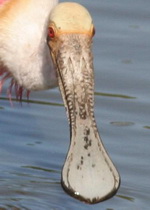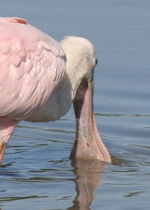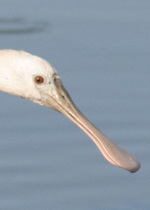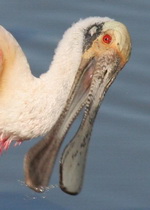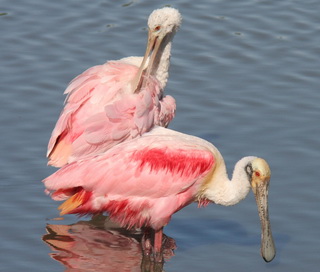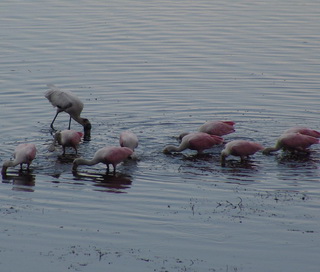Order: Pelecaniformes - Family: Threskiornitidae
The Roseate Spoonbill belongs to the family Threskiornitidae. It shares the group with ibises.
It has one of the most stunning bills among birds. The bill is incredibly long and extremely flat. The male´s bill is aproximately 23 cm long, the female´s, 19 cm. At the base it is as broad as the head, gets thinner towards the center and ends in a disk broader than the head. From this spoon-like bill derives the name of this bird. The tongue is very short, almost a fourth of the bill in length. The upper mandible tip is slightly decurved.
The mandibles have blunt borders with teeth-like structures in the proximal part. At the tip there are touch receptors which feel for prey and help detect it in cloudy waters.
The spoonbill feeds in shallow waters. It wades through the water with its bill practically submerged and moves it back and forth forming an arch. This technique is called "head-swinging". The spoonbill keeps the bill slightly open ready to snap it shut as soon as the receptors perceive the food item. Once caught, the spoonbill lifts up its bill to push the prey into the throat.
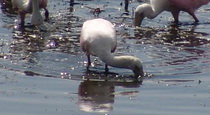 |
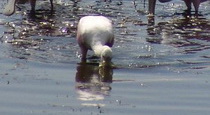 |
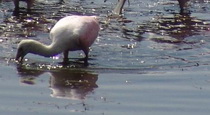 |
| An arch in three shots. View animation 450Kb | ||
|---|---|---|
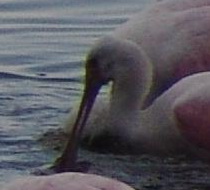 |
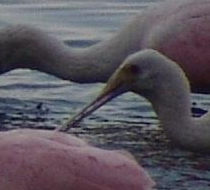 |
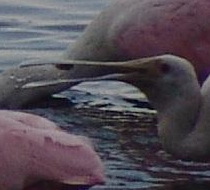 |
| The spoonbill sweeps the water with the bill, detects the prey, catches it and lifts the bill up to push it. This movement is necessary since its tongue is too short to get the prey. | ||
The spoonbill feeds on crustaceans, mollusks, amphibians, slugs, insects, larvae, aquatic plants and seeds. A carotenoid-rich diet gives the spoonbill the pink color of the feathers.
The spoonbill is a social bird which is commonly seen in groups together with other conspecifics or other aquatic birds (herons, ibises, storks, etc.). The spoonbill is found in fresh waters or in coastal salt waters.
The spoonbill is not a resident bird at the reserve. It is mostly observed during the summer.


